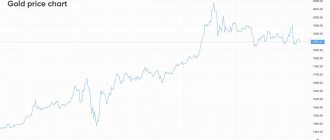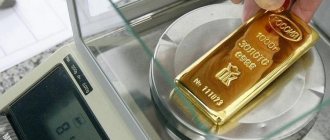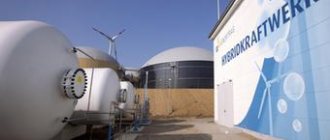Financial literacy
Precious metals have been used as an investment vehicle for many centuries. As early as 564 BC, gold became the first international currency. From that moment on, the precious metals market began to take shape, and gold was its constant leader.
The investment attractiveness of gold has long been associated with the existence of a monetary system based on the gold standard. Any monetary unit was backed by a certain amount of gold. Now the pegging of currencies to gold is a thing of the past, and the precious metals market exists independently of the foreign exchange market.
Over the long term, gold always rises in value, although its price may fall during certain periods. For this reason, gold is not always suitable for short-term investment. It is usually chosen by investors who plan to hold investments for at least 10 years and are not chasing excessive profits. Gold is also loved by conservative investors who prefer to invest money in a tangible physical object that has real value, rather than in paper (fiat money, stocks and bonds) or virtual digital assets. Many people view gold as a rescue tool that can be used to protect their capital - because its value will never fall to zero.
Let's look at the dynamics of changes in gold prices and the forecast for the future.
How much did gold cost: price dynamics
The price of gold on the world market is most often measured in dollars per troy ounce (31.1g). In 1717, Isaac Newton set the price of a troy ounce of gold at £4.24. After this, the price of gold did not change for almost 200 years.
The first serious increase in the price of gold occurred after 1932 due to military events. After that, the gold rate remained at approximately the same level until 1971 - until about. Since 1971, gold statistics have exhibited the same cyclical nature as the price dynamics of non-ferrous metals.
In 2001, an ounce of gold cost $272, and in 2011 the price rose to $1,600. From 1967 to 2011, gold rose in price from 35 to 1600 dollars (in 44 years it increased in price almost 50 times). There have been no major changes in gold prices since 2011; in recent years, the price per ounce has been approximately $1,350.
Influence of external factors
The simple economic commandment about demand creating supply is known to many. Those who are a little more knowledgeable in economic nuances know that expressed demand automatically increases the price in the absence of unlimited supply. Gold is not a metal that is lying around on the road, so its supply is not that free. Of course, you can buy your “crumb” or even a whole bar in almost any bank in the country, but with surges in demand, there is also an increase in cost. During a period of incomprehensible and alarming phenomena in the world economy, the value of this metal traditionally increases. The logic of ordinary buyers and large investors is simple - gold has a physical form and is unlikely to completely depreciate, as can happen with the currency of any country. The size of the jump in value is also related to the “depth” of the crisis - during long negative periods in the economy, the price of gold is constantly growing. Moreover, the severity of negative phenomena or simply the stagnation of the global economy have different effects on the cost of this precious metal. In the first case, active price rises are possible, and in case of stagnation, a rather slow but constant increase in value.
Some authoritative publications and news agencies write about the direct impact of the dollar index (DXY) on gold prices. It turns out that in the XAUUSD pair it is the weak dollar that is the reason for its growth. The price is quoted below resistance and it is too early to state a reversal of the Index.
If the price of DXY overcomes the $91.00 level, then gold will have reasons to return to the sideways movement. If the resistance holds and the Index price continues to fall, then the yellow metal has every chance to break out of the 4-year “captivity”, or at least try to do so in the form of a false breakout.
Why has gold not risen in price in the last 3 years?
For many years now, the stock market has been in a bullish trend, and while this is so, investors invest money in stocks, and not in precious metals. Many of those who bought gold in 2008-2011 have now sold their holdings of the precious metal and invested in the stock market.
If you look at the stock market alone (without derivatives), it is about 20 times larger than the physical gold market. Experts also believe that the outflow of capital from the gold market to the cryptocurrency market, which is at the level of $500 billion, did not have a serious impact on the gold market.
It should be taken into account that there are quite a lot of old-school traders and investors in the stock market who have difficulty understanding what cryptocurrencies are and for this reason do not invest money there. A striking example of such an investor is the legendary Warren Buffett. These investors prefer to reinvest money from the gold market into the stock market, which is familiar and understandable to them. Such capital flows have occurred before. The stock market grew - the precious metals market fell, the stock market fell - traders and investors switched to gold and other precious metals.
How much is gold worth in 2018
In the first quarter of 2021, the price of gold is slowly rising and is approaching $1,350 per ounce. The next factor for the rise in gold prices was inflation data in the United States, which turned out to be higher than economists expected. Since the last time the Fed raised interest rates (December 13, 2017), gold has risen in price by 8%.
The main factor pushing the price of gold up is the monetary policy pursued by President Trump. The new tax reform will lead to an increase in the US national debt by another $1.5 trillion over the next 10 years. And although the national debt now exceeds $20.7 trillion, in early February congressmen voted for a new budget for the next two years, which will increase the debt burden by another $300-400 billion.
In addition, the rating agency Moody's warned that it could downgrade the US rating from the maximum level of AAA. The monetary policy pursued by the US President will lead to a weakening of the US dollar, and this will support gold. Inflation is expected to increase; foreign goods will be more expensive. This will also support gold in an environment where savings are needed.
The fact that investment funds are again interested in investing in gold speaks in favor of gold. Bloomberg reports this, citing John Ciampaglia. Interest in gold arises against the backdrop of a weakening US dollar and the ongoing rally in the US stock market. Large investors who have been in the market for several years fear that a long rally may give way to a sharp correction and, under these conditions, strive to preserve their savings.
About the ruble...
- It is necessary to understand that - despite all official assurances - the ruble has very compelling fundamental reasons to fall further
. These reasons are the weakness of the Russian economy, which is totally and chronically dependent on the import of everything. There are a large number of reasons why it is unprofitable to produce in Russia, and therefore 95% of consumer goods are imported from abroad, exchanging them for raw materials. - Main reasons: unfavorable business climate, high taxes, inaccessible lending, high administrative pressure, resulting in total monopoly/oligopolies, etc. Where there is strong administrative pressure, new levies are constantly introduced; where there are monopolies/oligopolies, prices and tariffs rise rapidly and inflation accelerates. And inflation always puts pressure on the exchange rate of the national currency.
- If some product/service costs more in Russia (due to accelerated inflation) than abroad, it becomes more profitable to import this service. To import, you need to purchase foreign currency. Thus, rising prices in Russia increases the demand for currency, and the latter puts upward pressure on the currency exchange rate against the ruble. Laws of economics, nothing more.
- In a monopolized economy, prices rise faster -> the currency of a country with a monopolized economy must constantly devalue to the currencies of those countries where inflation is lower.
- We have every reason to believe that in April 2021, a year and a half consolidation of the ruble/dollar exchange rate at 58 +/- 3 rubles ended, and a new long-term phase of ruble devaluation began, which will bring the dollar/ruble exchange rate to levels above 100 rubles per dollar no later than 2021 (and possibly much earlier). You need to protect your savings
from the next wave of ruble devaluation.
What awaits gold and silver amid a possible trade war between the US and EU
President Trump has imposed tariffs on some goods from other countries. In response, EU countries have prepared a list of goods on which retaliatory duties will be imposed if the trade war intensifies. This news had almost no effect on the price of gold, increasing its price by only 0.45%. But if a trade war breaks out between the US and China, it will support the price of gold.
Many experts believe that US President Trump has started a dangerous game by starting to impose duties on imports of products from other countries, primarily China. He also demanded that China take decisive action as soon as possible to reduce China's $1 trillion trade surplus with the United States. Last year, the U.S. trade deficit with China hit a record $375.2 billion. Now Trump wants not only to reduce this deficit to zero, but also to gain a trade surplus with China of $600 billion. Many experts consider such wishes as fantasy.
The Chinese government will never tell its companies to sell less goods to the US, or for importers to buy more American goods. Over the past decades, China's prosperity has been built on mass production of goods and selling them to the United States. Refusal of such a policy would lead to the release of hundreds of millions of jobs and mass unemployment, which is completely unacceptable to the Chinese leadership. Most likely, it will introduce retaliatory tariffs against American goods. Thus, a trade war could begin between the two countries, which would plunge the world economy into chaos and uncertainty. The American stock market will be in a fever, just like the Chinese one.
The winner in such a situation will be precious metals, primarily gold, as safe havens in the event of obvious global instability.
Gold price forecast in 2021
According to many experts, by the end of 2021, gold will cost $1,500. This forecast is given by analytical companies Incrementum and GFMS Thomson Reuters.
Managing manager Ronald-Peter Stoeferle of the investment company Incrementum AG believes that this year gold should remain a must-have asset for those investors who want to preserve their capital. By the end of the year, the price of gold may reach 1.5 thousand dollars.
Gold is supported by rising US inflation, weak economic growth data and a weakening US dollar.
“I don’t know exactly what level gold can rise to, but I can confidently say that we are at the beginning of an upward bullish trend. This means that by the end of this year 2021, the cost of the precious metal could reach $1,500 per ounce,” the expert said. “The global economy, and the US in particular, is not as strong as many people think. Rising inflation around the world will be a major concern, and this in turn will negatively impact economic growth,” he added.
Employees of the analytical agency GFMS Thomson Reuters also expect that the growth that gold showed at the beginning of the year will continue. Analysts have increased their previous forecast and believe that gold will reach $1,500 this year, with an average price for the year of $1,360 per ounce.
Experts cite potential problems in global financial markets and ongoing geopolitical tensions in the world as factors that will contribute to the growth of gold. According to experts, the planned three increases in interest rates this year in the United States are already included in the price of gold. The results of President Trump's tax reform could lead to overheating of the American economy and tightening monetary policy in the United States.
But Heraeus analysts give a more modest forecast. In their opinion, this year gold will trade in the range of 1175-1375 dollars per ounce. In the first half of the year, we can expect a higher price for gold than in the second half of this year, given calm developments. If the geopolitical situation in the world heats up, gold can become a safe asset, a “safe haven” for preserving investors’ savings.
Our autumn golden forecast
Our assumptions about the autumn 2021 gold quotes are based on everything that we outlined earlier. And therefore, we believe that the most likely scenario for the behavior of trading in precious metals in general and gold in particular, based on the uncertainties in the relationship between the Chinese and American economies, which fundamentally influence the economy of the European Union, which also, by the way, is, to one degree or another, in conflict with the American economic interests is, in the context of all these conflicts, an increase in demand for precious metals.
Thus, we are on the verge of significant bullish gold prices. True, this process will follow such a pattern that the current dynamics will remain in the summer months. And, starting in September, when holders of large financial capital become concerned that the dollar is showing weakness, then they will start buying gold:
- in September, gold on the exchanges will already cost from $1,500 to $1,550;
- As for October, this month they will already give for it in the range from $1550 to $1650:
- in November 2021 you should get used to the price in the range from 1650 to 1750 US money.
Other drivers influencing the fall 2021 gold quotes, which we have left out of the equation.
Price forecast for silver, platinum, palladium
Silver is doing well, but right now there are no factors that would lead to its sharp rise. As the global economy grows, silver may receive support from industrial demand as it is used in many industries, including the alternative energy sector in the production of solar panels. Silver currently lacks investment demand.
Thus, both precious metals are in a protracted sideways movement, the exit from which requires serious fundamental factors that are not currently observed. Silver prices follow the trends of gold prices. The gold to silver ratio is 80.51, which is above the average level of 50 and gives hope for faster growth for silver in the future.
Platinum may also rise in price this year. This will be facilitated by an increase in industrial demand for platinum and the needs of jewelry enterprises. The rise in prices will also be facilitated by a decrease in global platinum production.
Palladium may also rise in price. The shortage of the precious metal observed last year could reach 1 million ounces in 2021.
Forecast of gold production in the main producing countries until 2030
L.A. Dorozhkina
— Federal State Budgetary Institution All-Russian Research Institute of Mineral Raw Materials named after. N.M. Fedorovsky" This included the vast majority of the world's gold deposits, including almost all giant, large and most medium-sized objects, as well as a significant part of complex deposits with associated gold. Placer gold deposits, including Russian ones, were not considered, since their mining, as a rule, is carried out by artisanal methods or by small non-public companies, information on the activities of which is not available.
The review uses data on fields producing more than 70% of global production. Some incompleteness of the data is due to the lack of sufficient quantitative information on reserves, resources and production in the deposits of China, which provides about 12% of global gold production, as well as on mining projects in this country. A significant part of gold mining and production in China is controlled by the state-owned China National Gold Group Corporation (CNGGC), which does not publish data on its activities in the public domain. The deposits for which reliable data are available produce less than a quarter of China's gold. In this regard, in a number of cases, statistical data on reserves, resources and gold production in the country as a whole were used for analysis.
Over one hundred countries around the world have gold reserves and resources. Today, industrial reserves of gold, according to our estimates, reach 63 thousand tons of gold, and its total resources exceed 120 thousand tons.
The production of the precious metal is growing and reached 3332.2 tons in 2021 [5]. However, from the middle of the next decade its steady decline is predicted (Fig. 1).
Rice. 1.
Forecast of gold production based on the resources of leading producing countries in 2017–2030, tons (for China - based on statistical data for the country as a whole)
Gold mining is carried out in more than 80 countries around the world. Major gold producers are: China, Australia, Russia, USA, Canada, Indonesia, Peru, South Africa, Mexico and Ghana; Each year they mine more than 100 tons of gold. They account for almost two-thirds of global gold production (Table 1).
China retains its position as the world leader in gold production. However, since 2015, after ten years of continuous growth, gold production in the country has been declining, amounting to about 400 tons in 2021, 6% lower than a year earlier [5]. The decline in production was affected by the closure of a number of small and medium-sized mines that did not meet environmental requirements due to tightening government regulation in the field of environmental safety. There is no reliable data on the volume of China's gold resource base. Reliable information is available only about fields developed by the largest Chinese companies or companies with foreign capital. In total, almost 100 tons of gold are mined at these sites, and we estimate their total resource base at 3,232 tons of gold. At the same time, according to the Ministry of Natural Resources of the People's of China, the country's resources reach 13,196 tons of precious metal [7]. This will allow the country to maintain the current level of metal production for a considerable time and maintain its position as a world leader.
Table 1.
Gold reserves and production volumes in leading countries ([1, 2, 5, 10], estimate)
In Australia, gold production, on the contrary, is steadily growing. More than 60% of the precious metal mined in the country comes from unique and large deposits of gold-sulfide-quartz ores of the Archean greenstone belts (Kalgoorlie, Sunrise Dam, etc.). Another third is accounted for by porphyry copper deposits (Cadia Valley, etc.). Until the end of this decade, the volume of gold mined will gradually increase thanks to the implementation of projects that are at a high stage of readiness (Gruyere, Batman, Bullabulling, etc.), as well as an increase in production at developed deposits with significant resource base (Kalgoorlie, Boddington, etc.). However, later gold production will begin to decline due to the depletion of the resource base of individual medium-scale exploited deposits, including Agnew, Cracow, Saint-Ives, and some small objects.
The raw material base of gold in Russia exceeds 14 thousand tons, which makes it possible to increase the production of the precious metal. Almost half of its reserves are concentrated in gold-sulfide-quartz (Blagodatnoye, Sukhoi Log, Natalkinskoye) and gold sulfide (Olympiadinskoye, Nezhdaninskoye) deposits in black shale terrigenous strata. The ore of the unique reserves (1943 tons in categories A+B+C1+C2) of the Sukhoi Log deposit in the Irkutsk region is richer than in foreign analogues, the average gold content in its ore is 2.1 g/t. Other large objects have been explored in the area of the deposit; together they form a compact area for the development of gold mining. Near another unique (1507 t) gold-quartz deposit Natalkinskoye in the Magadan region, objects of a similar type, but inferior in reserves, have also been explored - Pavlik and others.
A significant role in Russian gold mining is played by epithermal gold-silver deposits (Kupol, Mnogovershinnoye, Juliet, Ametistovoye, etc.), which are also often composed of richer ores (from 6 to 20 g/t or more) than foreign objects of the same type (Yanacocha, Pierina (Peru), Lagunas Norte (Dominican Republic) - 0.7–1.2 g/t).
Russia is one of the few countries in the world where placers continue to play a significant role, providing up to a quarter of the precious metal mined. Almost all of them are concentrated in the eastern regions.
In Russia, in recent years there has been an increase in gold mining from the subsoil; it exceeded the 350 t mark in 2021. However, according to our forecasts, already from 2025, a decrease in the production of the precious metal is possible, primarily due to the depletion of reserves of the Kupol and Dvoinoye, Blagodatnoye deposits, as well as a number of medium and small objects. It can be compensated by the commissioning of a number of large and medium-sized fields being developed. Thus, in 2021, it received the first gold from the Natalkinskoye deposit and plans to reach the projected capacity of 10 million tons of ore per year [9]. began industrial development of the Gross gold-quartz deposit in the Republic of Sakha (Yakutia); in 2021, 4.8 tons of gold were mined.
Since 2021, it has been conducting a large-scale drilling program to verify historical data at the largest gold-sulfide-quartz deposit, Sukhoi Log, in the Irkutsk region. The company plans to continue geological exploration until the end of 2021 and present a new assessment of the field’s reserves in 2021 [8]. Sukhoi Log is the largest undeveloped field in Russia; On its basis it is planned to build a gold mining enterprise with a capacity of 31 million tons of ore per year. When the enterprise reaches full production capacity, more than 40 tons of gold will be produced per year. The Sukhoi Log processing plant uses a standard gravity/flotation scheme; gold recovery rate 88–90%. Production is planned to begin in 2026, subject to a positive investment decision. A number of other large facilities are being prepared for operation - Nezhdaninskoye (Republic of Sakha (Yakutia), Kekura, Klen (Chukotka Autonomous Okrug), etc.
In the United States, gold mining is at another stage of growth, increasing by 2–3% per year [5, 6]. However, from 2026, a gradual decline in production is possible in the country due to the depletion of reserves of “Carlin-type” objects - the leading geological and industrial type in the country. Each of the "Carlin" type deposits - Goldstrike, Kortez and Karlin in the USA - produces about 30 tons of precious metal per year; they provide more than 40% of the country's gold production. The resource base of the first two is close to depletion: in 2025, the resources of the Goldstrike deposit will be exhausted, and by 2030, Cortez will suffer the same fate. And only Carlin has significant reserves and resources that will allow it to maintain gold production at current levels for 15 years or more. The depletion of resources from the Goldstrike and Cortez deposits can be partially compensated by the commissioning of the Goldrush deposit; its resources are estimated at almost 500 tons of gold with an ore grade of 4.8 g/t. The development of unique-scale deposits in the state of Alaska (Donlin Creek, Livengood, Pebble) could compensate for the decline in production in the country, but their commissioning is delayed due to environmental and financial problems.
Canada will be able to increase gold production in the coming years thanks to the development of a significant number of new, including large deposits.
The Brucejack and Rainy River fields came into production in 2021; the total production from them amounted to 18 tons of gold. In 2021, the large Blackwater gold-silver deposit is expected to be commissioned, with a designed gold production capacity of about 16 tons per year. A group of porphyry gold-copper deposits, Kerr Sulfurets Mitchell, is being developed in the province of British Columbia, where about 23 tons of metal will be extracted annually [11]. At the developing Detur Lake gold-sulfide-quartz deposit, after the planned expansion of capacity in 2021, about 20 tons of gold will be mined per year. Thus, after 2021, the country can increase production by 30% and become one of the leaders in the industry.
Indonesia can maintain its position as a major producer for a long time thanks to the powerful raw material base of the unique Grasberg deposit and a number of exploited gold-silver deposits. More than 35 tons of precious metal are mined annually at the Grasberg deposit (74.6 tons in 2018); production rates vary depending on the gold content in the ore [4].
In Peru, the decline in production will continue due to the depletion of reserves of the country's largest gold-silver deposits, Yanacocha and Lagunas Norte; no new large objects have been explored here, with the exception of the porphyry gold-copper deposit Conga, whose proven+probable reserves amount to 368 tons. However, environmentalists and local residents are actively opposed to its development, so there is no talk of exploitation of this object yet .
In South Africa, the significant resource potential of gold-bearing conglomerate deposits allows the production of the precious metal at the level of 2021 and above for a long time. However, a decline in its production is possible. The large mining depth (more than 3900 m) and the complication of mining technical operating conditions of long-running objects determine the high cost of gold mining. Given the low prices for gold on the world market, this may lead to the closure of some mines and, as a result, a reduction in production.
In Mexico, in the next three years, gold production is expected to increase by approximately 10%, due to the development of a number of large and medium-sized deposits of gold-silver ores - Metates, Camino Rojo, El Arko, etc. However, then the volume of mined metal may begin to decline due to the depletion of raw materials at some small and medium-sized operating sites, including Kreston Mascota, Pinos Altos, and San Dimas. And by 2030, the resources of the large gold-silver deposit of Penasquito will be depleted.
In the last decade, there has been a tendency in the world to slightly shift the attention of gold mining companies from traditional gold mining regions (North America, South Africa, Australia) to the countries of South America, West and Central Africa, Asia and Oceania. The continuation of the trend will contribute to the emergence of new producers or the strengthening of the role of countries where production was previously carried out in small quantities.
Thus, the Dominican Republic has become a notable gold producer thanks to the start of mining at the Pueblo Viejo gold-silver deposit in 2012; in 2021, 45 tons of gold were recovered from it [3]. An almost twofold increase in the production of the precious metal in Chile will be ensured by the commissioning of such giants as the Cerro Casale gold-copper deposit and the PascuaLama gold-silver deposit, the total annual production of which can reach 50 tons of gold. By 2021, it is possible to increase production by 20% in the Philippines and Kazakhstan, where deposits of gold-silver and gold-sulfide-quartz ores in terrigenous strata are being developed. Production may increase in Colombia, where the Buritica field is being developed, in the Philippines (Kingking), and Burkina Faso (Kiaka).
However, after 2025, a steady decline in global gold production is projected, and by 2030 it could be approximately 20% lower than in 2021. A significant contribution to this will be made by the depletion of Carlin-type deposits in the USA and the largest gold-silver objects Peru. In addition, sharp declines in the amount of metal recovered are expected in Argentina, Tanzania and Ghana. The resources of Argentina's main deposit Veladero, which annually supplies about a third of the gold mined in the country (in 2018 - 17.2 tons) [3], may be exhausted by 2028. In addition, in the period until 2030, the depletion of raw materials is expected bases of a number of large gold-silver and gold-porphyry deposits: Alumbrera, Cerro Vanguardia, etc. As a result, by 2030 gold production may be reduced to 10–20 tons. In Tanzania in 2022 may the resources of the Geita deposit, which annually supplies 15 tons of precious metal, or 35% of the total production in the country, will be developed. In Ghana, by 2026, the resource base of the Akayem and Chirano deposits, which together produce almost a quarter of the country’s gold, may be depleted.
It should, however, be noted that the current global gold base is sufficient to ensure the current level of production and even growth in the coming years. And the predicted further decline is only possible if new development projects, which are now in the early stages of exploration, do not appear.
Published in the magazine “Gold and Technology”, No. 3(45)/September 2021
1.
Ministry of Finance of the Russian Federation.
Announcement. About the mining and production of gold and silver for 2021 2.
Australian Government, Geoscience Australia.
Australia's Identified Mineral Resources 2021. 3.
Barrick Gold Inc.
Annual Report 2021. 4.
Freeport-McMoRan.
Annual Report 2021. 5.
Gold Fields Mineral Services (GFMS) 2021.
6.
Metal Focus.
Gold 2021. 7.
Ministry of Natural Resources of the People's of China.
China Mineral Resources 2021. 8.
PJSC Polyus.
Press Releases. Exploration drilling program completed at Sukhoi Log. 9.
PJSC Polyus.
Annual Report 2021. 10.
Polimetal International Plc.
Annual Report 2021. 11.
Seabridge Gold Inc.
Projects. KSM. 12.
United States Geological Survey 2021.











